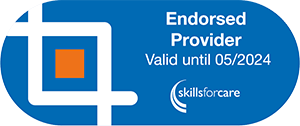Your workplace will have policies and procedures based on legislation and other relevant documents. Speak to you Manager regarding where these can be found. The following list may give you some guidance on which policies and procedures you should be aware of to carry out your role effectively.
The following will give you an overview of these documents and legislation:
Health & Safety at Work Act 1974.
Employers’ duties:
To provide and maintain equipment and work systems which are safe and healthy.
To deal with substances, such as chemicals, safely.
To provide information, instruction, training and supervision.
To maintain safe and healthy workplaces with the necessary facilities.
To provide a Health & Safety policy statement (if employing 5 or more people).
To ensure visitors, members of the public and others are not put at unnecessary risk
Employees’ duties:
To take care of their own health & safety at work – don’t just expect others to do this for you, you must constantly be thinking about what you are doing and assessing any potential risks.
To take care of the health & safety of others – think of your colleagues, clients and visitors. Good communication is essential; if you see something wrong don’t keep it to yourself report it.
To cooperate with their employer – take advantage of any information, instruction and training given and work in accordance with the rules of your workplace.
Do not misuse or interfere with anything provided for health and safety purposes – if you do so you will put everyone in your workplace at risk and be liable to prosecution.
Failure to comply with the Health & Safety At Work Act 1974, or related legislation, could result in you being fined, an unlimited sum to be paid as compensation, and / or a custodial sentence.
Health and safety legislation exists to protect all workers – it is in your interest to ensure that you follow it.
For further information please look at our Health and Safety course or speak to your Manager about the Health and Safety policies at your place of work.
The Management of Health and Safety at Work Regulations 1999.
Employers must undertake a range of duties including:
Carrying out risk assessments.
Making arrangements for the planning, organisation, control, monitoring and review of health and safety measures.
Appointing a competent person or persons to assist with health and safety.
Establishing emergency procedures.
Providing health and safety information training.
Managers are not expected to make work places 100% risk free but they must show that they have introduced sensible and adequate measures to reduce risks where possible.
Health & Safety (First Aid) Regulations 1981.
Adequate first aid provision is essential to reduce the impact of injuries caused by accidents in the workplace. It is up to employers, and trained first aiders, to organise and provide appropriate first aid. All employees should be aware of the provisions made.
Appropriate first aid provision will include:
First aid kits – these must be adequately stocked and readily available.
Trained first aiders – the number needed will depend on the number of staff employed, shift patterns and the presence of other people on the premises. Guidelines recommend one fully trained first aider per 50 staff.
Reporting and recording – accident books and R.I.D.D.O.R. 2013.
Reporting of Injuries, Diseases and Dangerous Occurrences Regulations (R.I.D.D.O.R.) 2013.
Employers have a responsibility to report certain occurrences to the relevant authorities (Health & Safety Executive, Environmental Health Department etc.). Reportable incidents include:
Injuries to staff resulting in 7 or more days off work.
Injuries to members of the public (including residents, contractors etc.) that require medical treatment.
Exposure to carcinogens, mutagens and biological agents diagnosed as work related.
Dangerous occurrences such as fires, electrical faults, building collapse, accidents with equipment and machinery which may not result in a reportable injury but have the potential to do serious harm.
Deaths.
As employees you are not responsible for reporting but you do have an obligation to ensure that your employer is aware of any potentially reportable incidents.
Manual handling accidents are the single largest cause of reportable injures.
Control of Substances Hazardous to Health (C.O.S.H.H) 2002.
Employers have a duty to reduce the risk of hazardous substances in the workplace, they must display information about the potential effects of chemicals; they should provide information and training about safe handling; and ensure safe storage. When you use hazardous substances you have a duty to ensure that you are handling them safely and you must comply with any measures introduced by your employer, such as wearing personal protective equipment (gloves, goggles etc.).
Be aware – hazardous substances are not just chemicals, they could be bars of soap, medicines or even bodily fluids. Make sure you know about the substances that you work with.
Health & Safety (Consultation with Employees) Regulations 1996.
Employers must provide employees with health and safety training and information necessary to reduce risks involved in their work.
Personal Protective Equipment Regulations 2002.
If an employer’s risk assessment identifies a need for personal protective equipment (PPE) to reduce the risk, they should provide it. The equipment must be suitable for the task, manufactured to comply with appropriate standards and useable with any other equipment necessary. Employers should ensure that PPE is kept in good working order and is replaced when necessary. As employees you must use PPE when your employer has indicated that it is required, if you fail to do so and are injured it will be your fault.
Moving and Handling Operations Regulations (MHOR) 1992 as amended 2002.
Employers’ duties.
AVOID the need for hazardous manual handling as far as is reasonably practicable.
ASSESS the risk of injury from any hazardous manual handling that can’t be avoided.
REDUCE the risk of injury from hazardous manual handling as far as is reasonably practicable.
Manual handling operations should be mechanised wherever possible. Where hazardous manual handling is unavoidable employers must carry out risk assessments and introduce measures to reduce the likelihood of injury; the assessment and findings should be recorded and made available to employees.
Employers must ensure that employees are aware of the risks involved in any manual handling tasks they carry out; all employees must receive adequate training to enable them to work safely.
Employees’ duties.
Follow appropriate systems of work laid down for their safety.
Make proper use of equipment provided to minimise the risk of injury.
Cooperate with the employer on health and safety matters.
Apply the duties of employers, as appropriate to their own manual handling activities.
Take care to ensure that their activities do not put others at risk.
Remember, these regulations exist to ensure your safety; if you do not follow guidelines for safe manual handling and you are injured your employer is unlikely to be liable.
Lifting Operations and Lifting Equipment Regulations (LOLER) 1998.
Hoists, slings and bath hoists are covered by these regulations.
Equipment used must be:
• Strong and stable enough for the intended load.
• Marked to indicate safe working load.
• Used safely – the equipment use should be organised, planned and executed by competent people.
• Subject to ongoing examinations and inspections by competent people.
The Provision and Use of Work Equipment Regulations 1998 (PUWER).
This legislation covers all your lifting equipment and any other tools, machinery, appliances etc which you use at work.
Equipment must be:
Suitable for intended use.
Safe for use.
Used only by people who have received appropriate information, instruction and training.
Accompanied by suitable safety measures e.g. Protective devices, markings and warnings.
All equipment should be inspected by a competent person when it is installed, after exposure to anything that may cause damage and at regular intervals to ensure safety.
Health and safety legislation may seem complicated but it is often just a question of using common sense and thinking about what you are doing.
The Human Rights Act 1998.
The Human Rights Act has major implications for provision of care; particularly influencing the move towards person centred care. Successful prosecutions against local authorities have shown that blanket policies imposed by organisations are unlawful. In practice this means that policies such as ‘no lifting of clients’ must be replaced by individual risk assessments.
When developing policies and procedures to protect the health, safety and welfare of clients and staff it is necessary to find solutions which are least restrictive of individuals’ rights and freedoms.
The Data Protection Act 2018.
General Data Protection Regulations (GDPR).
The Data protection Act has been updated, with its main purpose being to implement the General Data Protection Regulations, GDPR, to give citizens and residents back control of their personal data. GDPR applies to any written or computerised personal information. Your employers, and you, have a duty to handle all recorded information in a way that protects the rights of the individual it refers to.You must: Prevent access by unauthorised people i.e. filing cabinets should be kept locked, computers should be protected by passwords and personal information must not be left on your desk or screen.Only pass on information to people who have a right to know it in a way which keeps it confidential from others i.e. take extra care when sending information by fax or e-mail.Make sure information recorded is accurate, relevant, and adequate not excessive; do not record unnecessary information.Destroy records when they are no longer necessary in a way that prevents them being accessed by unauthorised individuals.Subject Access Requests.Under data protection, individuals have the right to ask to see any personal information that is held on them. The organisation holding the information must enable this to happen, unless they have justification not to. If the information held is not up to date, the organisation may be in breach of data protection. The information must be in a recognised format.





